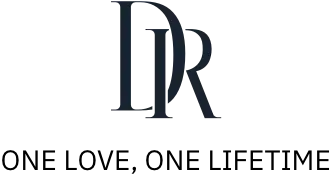Is Darry Ring Real Diamond? A Full Review
Oct 24, 2024
Are Darry Ring real diamonds? At Darry Ring, we take pride in upholding the values behind our brand, which is why we’ve introduced the True Love Verification process. This requires buyers to complete an ID verification to create their Darry Ring ID—an identity linked to their purchase for a lifetime. This system embodies our "Buy for One Person in a Lifetime" philosophy, meaning that each engagement ring is intended for one lifelong partner.

Is Darry Ring Diamond Real?
But how does this ensure the authenticity of our diamonds? By committing to this philosophy, we also commit to offering only genuine, high-quality diamonds that reflect the significance of such a profound commitment. Every Darry Ring diamond is carefully selected and certified, ensuring that the symbol of your love is as authentic as the bond you share. It is important to note that Darry Ring can only guarantee the quality and authenticity of our diamonds when purchased through our official channels, either online or in one of our offline boutiques.
Purchasing from non-official sources will result in the absence of a purchase history with us, and we are neither able nor willing to provide assistance for counterfeit products.
Each of our rings carries a distinct code engraved on the inside, connected to your exclusive True Love Agreement. Through our Love Check feature, you can easily verify this. The engraving includes the DR Certificate Number, the quality of the material (such as AU750 for 18K gold), and the size of the diamond you’ve chosen (e.g., D 0.05ct), making your ring truly yours and ensuring transparency and authenticity in every detail.

Check If a Darry Ring Diamond is Real: 5 Effective Methods
For those looking to verify the authenticity of their diamond at home, there are a few easy methods to try. While these tests offer some guidance, it’s essential to understand their limitations and remember that professional assessment is always the most accurate way to determine a diamond’s authenticity.
1. Real Diamonds Exhibit Brilliance and Fire
One of the first visual signs of a diamond’s authenticity is its ability to reflect light. A genuine diamond reflects light with both brilliance (white flashes) and fire (rainbow-colored light).
To test this, hold the diamond under direct sunlight or a bright light. If it produces a captivating sparkle with both white and rainbow-colored reflections, it is likely real. However, certain high-quality imitations, like cubic zirconia or moissanite, can also exhibit brilliance and fire, so this test should be used alongside others.
2. Real Diamonds Don't Fog Up
Real Darry Ring diamonds are excellent conductors of heat, which means they don't hold onto warmth. To perform the fog test, breathe on the diamond, causing a thin layer of fog from your breath. A real diamond will clear almost instantly due to its heat conductivity. If the fog lingers for several seconds, it might not be a genuine diamond. Keep in mind that factors like room temperature can affect the results, so it's best to repeat this test a few times.
3. Real Diamonds Can't Be Scratched
Diamonds are the hardest natural material on Earth, scoring a 10 on the Mohs scale of hardness. This means that only another diamond can scratch a real diamond. You can test the stone by lightly attempting to scratch its surface using a tool like a knife. If the diamond resists scratches, it may be real. However, this test is not recommended as it could potentially damage the setting or other parts of the ring. It’s much safer to have a jeweler conduct this test using proper instruments.
4. Real Diamonds Are Set in Precious Metals
Genuine diamonds are typically set in high-quality metals like gold or platinum. Check for metal markings inside the ring’s band, such as 10K, 14K, 18K for gold or PT and Plat for platinum. These markings indicate that the ring is made of a precious metal and likely contains a real diamond.
However, a "925" stamp suggests the metal is sterling silver, which is less common for authentic diamond settings but does not necessarily mean the diamond is fake. Also, beware of a “CZ” mark, which usually indicates cubic zirconia, a popular diamond alternative.
5. Real Diamonds May Glow Blue Under Ultraviolet Light
When placed under ultraviolet (UV) light, many real diamonds will fluoresce with a blue glow. However, not all genuine diamonds exhibit this characteristic. If your diamond glows blue, it’s a strong sign of authenticity. If it doesn’t glow, it may still be a real diamond, as fluorescence varies. This method is not foolproof but can be a helpful additional test when combined with others.
Bonus: Are Lab-Grown Diamonds Real
It’s also important to note that both natural diamonds and lab-grown diamonds share the same physical properties—hardness, brilliance, and fire. Lab-grown diamonds are created using advanced technology that mimics the natural diamond formation process, making them indistinguishable from natural diamonds in appearance and quality. Rest assured, lab-grown diamonds undergo the same grading and verification processes as natural diamonds and are equally authentic. The key difference between the two is how they are formed:
● Natural diamonds are created over billions of years under high pressure and heat deep within the Earth's crust.
● Lab-grown diamonds are produced in laboratories using techniques like High Pressure, High Temperature (HPHT) or Chemical Vapor Deposition (CVD), replicating the conditions under which natural diamonds are formed.
Always Seek Professional Assessment
While these tests for is Darry Ring real diamond can provide some insights, they are not foolproof, and some imitation stones can still pass certain tests. Therefore, a professional diamond appraisal is the most reliable way to determine if your diamond is real. Certified jewelers or gemologists use specialized equipment and methods that go beyond what you can test at home.




